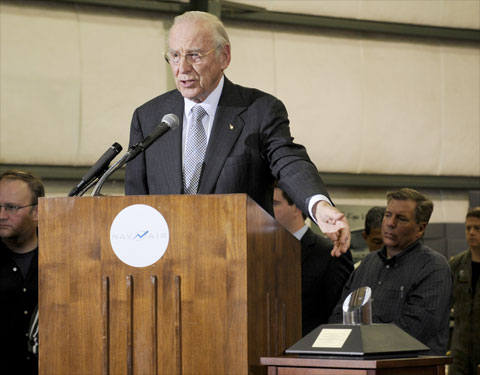 Space News space history and artifacts articles Messages space history discussion forums Sightings worldwide astronaut appearances Resources selected space history documents |
If you have previously registered, but forgotten your password, click here.
NASA is giving the Ambassador of Exploration Award to the first generation of explorers in the Mercury, Gemini and Apollo space programs for realizing America's goal of going to the moon. The award is a moon rock encased in Lucite, mounted for public display. The rock is part of the 842 pounds of lunar samples collected during six Apollo expeditions from 1969 to 1972. Lovell was born in Cleveland and received his bachelor's degree from the United States Naval Academy in 1952. He spent four years as a test pilot at the Naval Air Test Center, now the Patuxent River Naval Air Station. Lovell was the pilot for the Gemini 7 mission and the command pilot for Gemini 12. He and fellow crewmen, Frank Borman and William A. Anders, became the first humans to leave the Earth's gravitational influence and travel to the moon during the Apollo 8 mission in 1968. On Lovell's fourth mission, he was the commander of Apollo 13.  | ||||||||
| Dave Clow | I'm sure someone has already long since answered this, but I'm curious to know how these particular samples were chosen, and why they weren't considered primarily valuable for research purposes. I've seen a couple of them and it's always a thrill. | |||||||
| Robert Pearlman | The samples, as I understand it, are from rocks that have already been extensively studied, such that there scientific value has been exhausted. | |||||||
